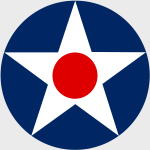Corgi AA33312 USAAC Boeing B-17E Flying Fortress Heavy Bomber - 41-2488, 30th Bombardment Squadron, 19th Bombardment Group, Malang, Java, 1942 (1:72 Scale)
"Why should we have a navy at all? There are no enemies for it to fight except apparently the Army Air Force."
- General Carl Spaatz, Commander of the US 8th Army Air Force, after WWII
 The B-17, arguably World War II's most famous heavy bomber, first flew on July 28th, 1935, before a crowd of reporters eager to see Boeing's new bomber take wing. It was dubbed the "Flying Fortress" by the members of the press in attendance because of its (at least for the time) heavy defensive armament. The prototype crashed in October, but because of its impressive speed and handling the US Army Air Corps (USAAC) decided to continue testing anyway. They ordered 13 YB-17s for further evaluation, a decision that would prove momentous in years to come.
The B-17, arguably World War II's most famous heavy bomber, first flew on July 28th, 1935, before a crowd of reporters eager to see Boeing's new bomber take wing. It was dubbed the "Flying Fortress" by the members of the press in attendance because of its (at least for the time) heavy defensive armament. The prototype crashed in October, but because of its impressive speed and handling the US Army Air Corps (USAAC) decided to continue testing anyway. They ordered 13 YB-17s for further evaluation, a decision that would prove momentous in years to come.
The YB-17 had five machine guns, room for 4,800 pounds of bombs and a crew of nine. It had electrically retractable landing gear. After testing the YB-17, an improved prototype, the Y1B-17, was built with Wright Cyclone radial engines. Twelve were delivered to the USAAC's 2nd Bombardment Group for trials. One of these was soon equipped with new Moss/General Electric turbochargers that became standard on all future Flying Fortresses. The first production order was for 39 B-17Bs with turbo-charged engines, and as soon as these were under production another order for the B-17C was placed, with seven machine guns instead of the original five.
The RAF received their first B-17Cs in 1941, and were soon conducting daylight raids over Germany. The defensive armament soon proved inadequate, and the B-17's altitude was little defense against the German fighters. Orders for the B-17D were soon placed with self-sealing fuel tanks and more armor because of lessons learned in bombing missions over Europe. The B-17E and B-17F soon followed with larger tail. The B-17F was the first to serve with the USAAF 8th Air Force. After suffering staggering losses in late 1943, analysis proved head-on attacks by enemy fighters were a distinct problem. The final major version, the B-17G, added a chin turret with dual machineguns. This gave the B-17 a defensive armament of 13 guns.
After the war, several dozen B-17s lived on as fire-bombers and aerial surveyors until the last one was retired in the 1970s. Today, a few B-17s have been restored to their wartime splendor. Ten are currently flying in the United States, one in the UK and another one in France. Features extremely high level of details including full crew, rotating gun turrets, working undercarriage, and bomb load.
This particular 1:72 scale replica of a B-17E Flying Fortress heavy bomber was flown by the 30th Bombardment Squadron, 19th Bombardment Group, based at Malang, Java, during 1942.
Sold Out!
Dimensions:
Wingspan: 17-1/2-inches
Length: 12-1/4-inches
Historical Account: "A Cup of Java" - The 19th Bombardment Group was stationed at Clark Field when the Japanese attacked on December 8th, 1941, suffering numerous casualties and losing most of its aircraft in the attack. A small number of B-17s on maneuvers with the 93rd Bomb Squadron at Del Monte Field on Mindanao escaped unharmed.
During December 1941, the 19th began reconnaissance and bombardment operations against Japanese shipping and landing parties. By the end of the year, ground personnel joined infantry units defending the Philippines, while the air echelon moved to Australia to transport supplies from there to the Philippines and to evacuate personnel.
The group flew B-17s, B-24s, and LB-30s from Java against enemy airfields, shipping, and ground installations during the Japanese offensive in the Philippines and Netherlands East Indies during early 1942. It participated in the Battle of the Coral Sea, in May 1942, and raided enemy transportation and communications targets as well as troop concentrations during the Japanese invasion of Papua New Guinea. The group bombed enemy airdromes, ground installations, and shipping near Rabaul, New Britain in August 1942. Capt. Harl Pease received the Medal of Honor for a mission flown on August 7th, 1942.
It served in the continental United States as a replacement training organization at Pyote Army Airfield from January to November 1943. The group was largely unmanned from December 1943 to April 1st, 1944, when it was inactivated. The group was activated the same date at Great Bend AAF in Kansas, at the 19th Bombardment Group (Very Heavy) and began training for B-29 combat missions. Between December 1944 and January 1945 the group deployed to North Field on Guam as part of the 314th Bomb Wing of the Twentieth Air Force.
From Guam, it conducted its first B-29 bombing raid on February 25th, 1945, against Tokyo. The group flew 65 raids on the Japanese home islands, bombing strategic targets in Japan, participating in incendiary bomb attacks against Japanese cities, and attacked kamikaze airfields during the invasion of Okinawa in the spring of 1945.







![US Navy Iowa Class Battleship - USS Missouri (BB-63), Measure 32, Design 22D Camouflage, Pacific Theatre of Operations, 1944 [Full Hull Version] (1:700 Scale)](http://cdn4.volusion.store/qh9e9-jdqv9/v/vspfiles/photos/FOV861131B-1.jpg?v-cache=1740197136)
